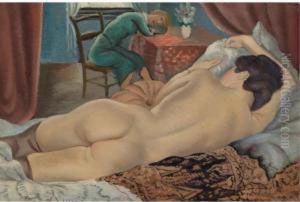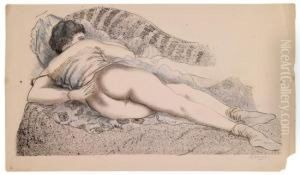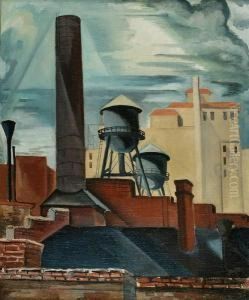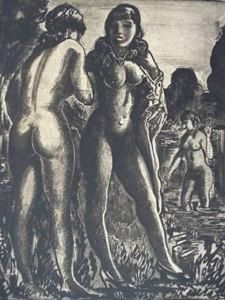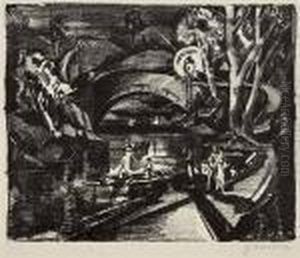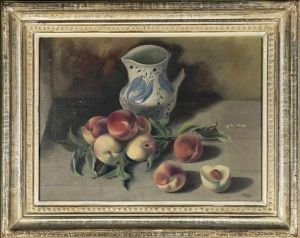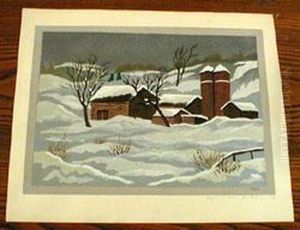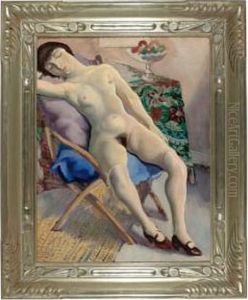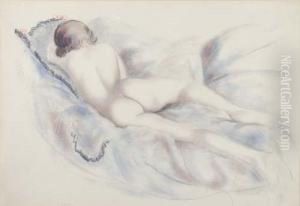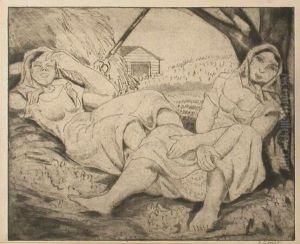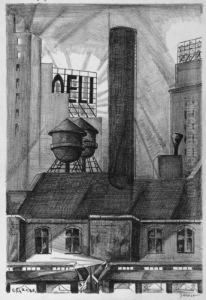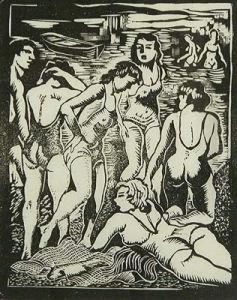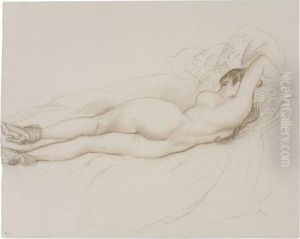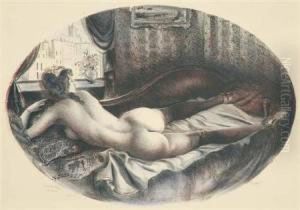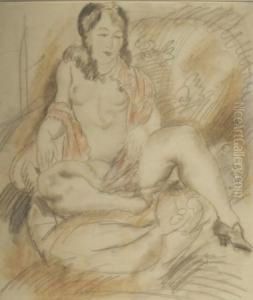Emil Ganso Paintings
Emil Ganso was a German-American painter and printmaker known for his landscapes, nudes, and still lifes. Born on October 22, 1895, in Halberstadt, Germany, Ganso grew up in a working-class family. With an early interest in art, he apprenticed as a pastry chef, which allowed him to save money for his emigration to the United States in 1912. Settling in New York City, Ganso worked in a bakery but devoted his spare time to studying art and visiting museums.
During the 1920s, he became more seriously involved in his artistic pursuits, taking classes at the National Academy of Design and the Art Students League. It was also during this period that Ganso began to receive recognition for his work, with several exhibitions showcasing his prints and paintings. He was particularly influenced by European modernism, which is evident in his stylistic experimentation and his focus on the human figure and interiors.
In 1931, Ganso was awarded a Guggenheim Fellowship, which allowed him to travel to Europe and immerse himself in the art scene there. His work began to gain further acclaim, and he was included in exhibitions at prestigious institutions such as the Whitney Museum of American Art and the Chicago Art Institute.
Ganso's art is characterized by a warmth and sensuality, often employing a rich palette and a gentle, lyrical approach to form. Despite his success, he struggled with financial instability and health issues throughout his life. Emil Ganso died on May 14, 1941, in Iowa City, Iowa, where he had been teaching at the University of Iowa's School of Art. His legacy is preserved through his contributions to American art, particularly in the realm of printmaking, and his works remain celebrated for their vibrant yet intimate portrayal of life.
